AVI3M
Visual Arts, Grade 11
Prerequisite: Grade 10 Visual Arts
Course Outline
Module 1 Overview: Recap: The Creative Process, Elements And Principles of Design
Guiding Questions:
What is the creative process and how do you apply the elements and principles of design in your own artwork?
In this module you will use the creative process, to practice implementing the elements and principles of design along with color theory, to produce artworks that showcase your skills. You will learn to use critical thinking to encourage thoughts and feelings about artworks and to discuss the advantages and disadvantages of certain drawing techniques. You will complete a series of sketchbook activities to help you develop your understanding of the module lessons and enable you to practice the skills learned when creating artwork of your own. You will keep a reflective journal to aid you with your personal development and learn how to produce an artist statement to support your work.
Module 2 Overview: Perspective And Composition
Guiding Question:
What are the rules of composition and how do I achieve a 1, 2 or 3 point perspective in my work?
In this module, You will develop your understanding of perspective and composition and how to successfully implement them into artwork of your own. You will complete several sketchbook activities to support your learning and produce a portfolio piece demonstrating the use of 1,2 and 3 point perspective.
Module 3 Overview: Creating Original Artwork
Guiding Question:
What’s the difference between appropriation and plagiarism?
In this module, you will learn the definition of plagiarism, appropriation and copyright and how they are to be considered when creating art work. You will explore ways of creating original artwork through observational drawing and photography. You will develop your understanding of perspective and composition and how to successfully implement them into artwork of your own.
Module 4 Overview: Art Styles
Guiding Question:
What inspired the great art movements and styles throughout art history?
In this module, you will research and recognize the different art styles and movements throughout art history. You will identify artists associated with a particular movement and the characteristics that are attributed to that style. You will gain a greater understanding of recontextualization in art and why artists appropriate others work. You will undertake a graded discussion, on what makes art, art and provide a fact based argument to support your opinion.
Module 5 Overview: Body Art & Culture
Guiding Question:
How do people use body art to express themselves?
In this module, I will explore the history of body art in all its forms. I will discuss how body art is used in different cultures around the world and how each form symbolizes different meanings. I will focus on the art of body painting, henna and tattooing, what they symbolize and their importance. I will complete several activities to develop my understanding of the different styles and how to be a responsible artist when it comes to using products on skin.
Module 6 Overview: Art to Save the Planet
Guiding Question:
How can art help save the planet?
In this module, I will explore the impact humans are having on the planet, how to be a responsible artist, and how art can be used as a platform to highlight issues. I will look at environmental artists and how they are using their artwork to raise awareness of environmental issues. I will create artwork of my own focusing on endangered animals through loss of habitat.


